The ‘forgotten parade’ of the Allies in Berlin (PHOTOS)
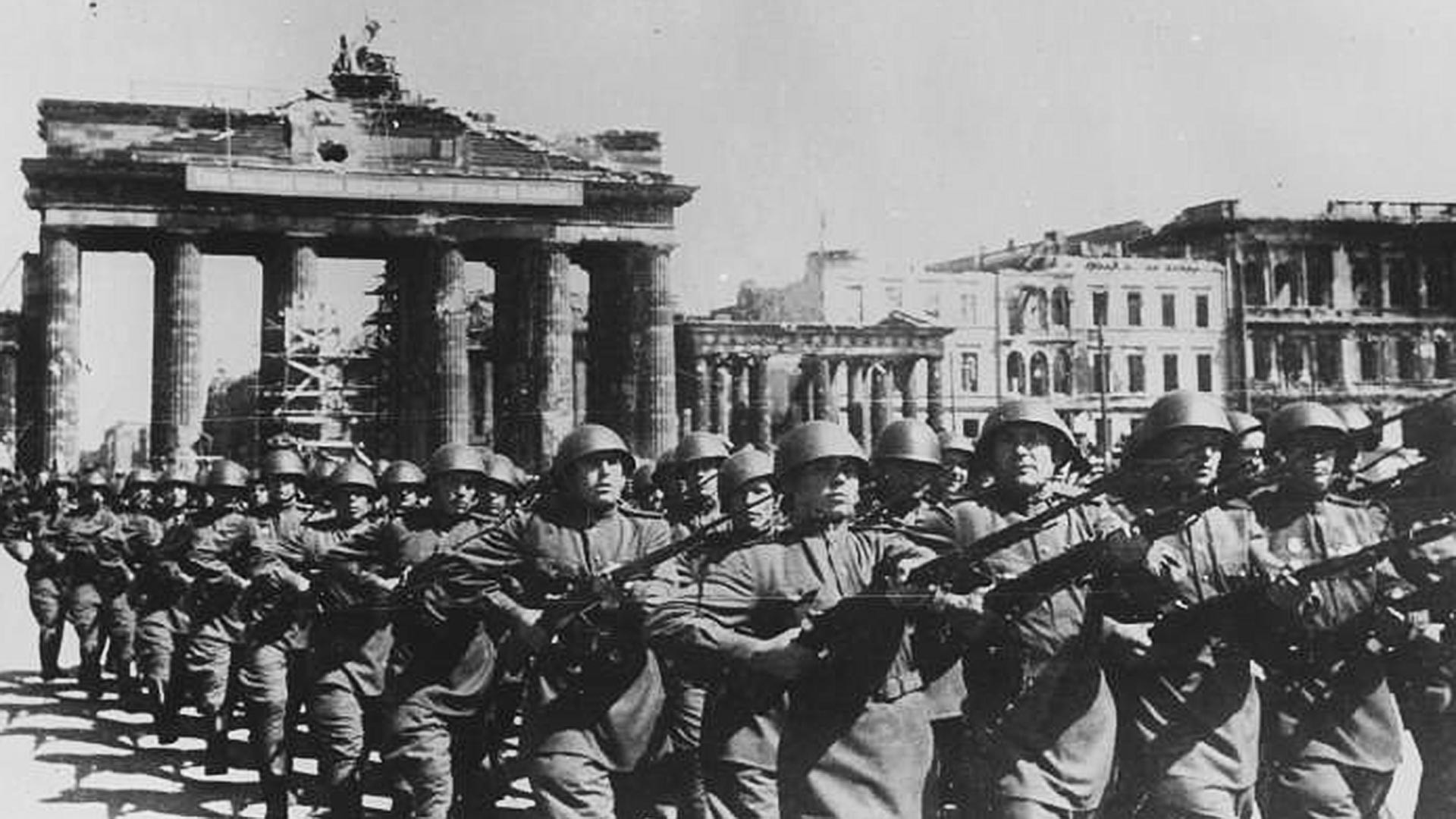
After crushing Nazi Germany, each victorious country celebrated in its own way. One of the more grand events became the Red Army Victory Parade in Moscow on June 24, 1945. Some 30,000 people were in attendance. Another event was held in Berlin on July 21 — the British one, which included 10,000 of Her Majesty’s soldiers, greeted by Winston Churchill, and a march down the German capital's streets.
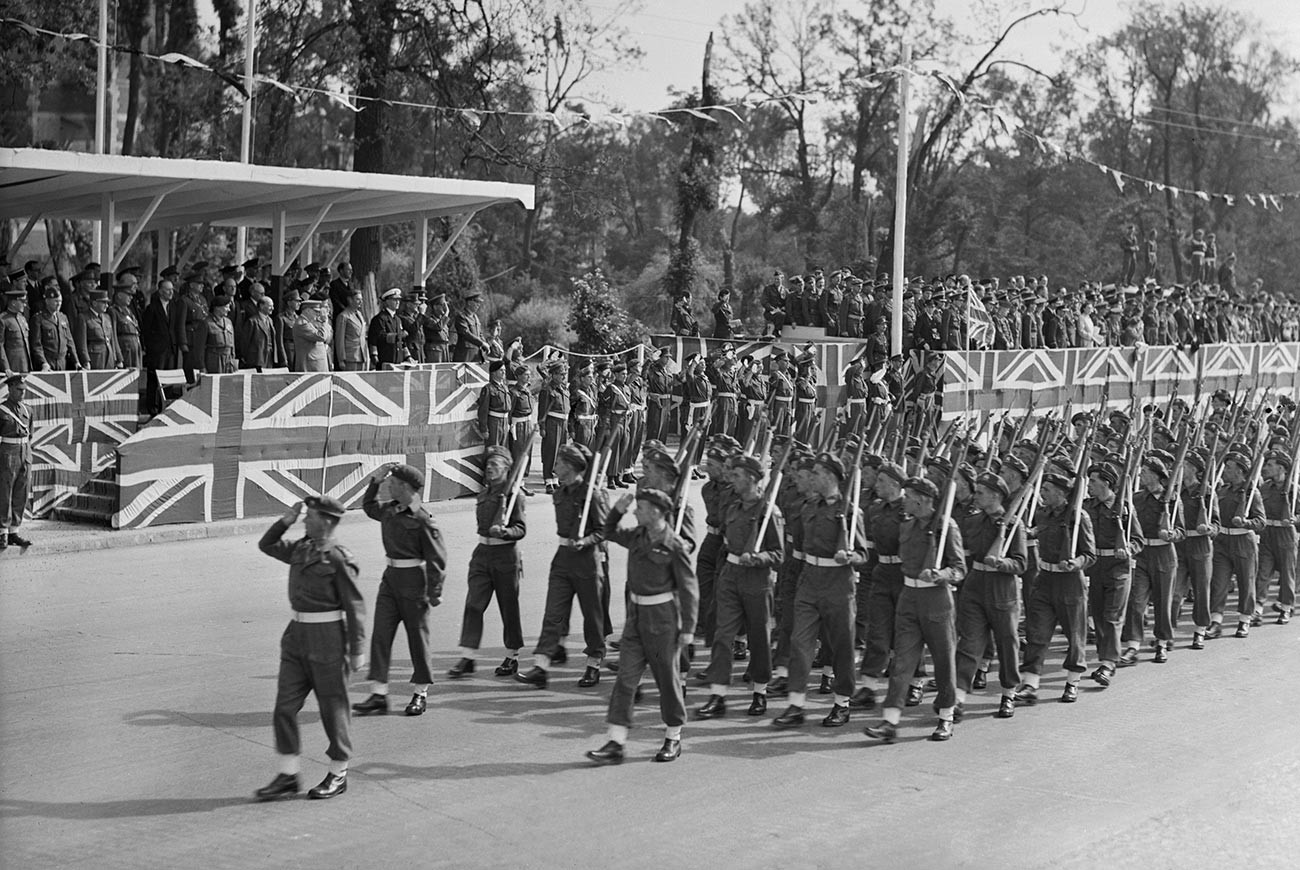
Prime Minister Churchill reviews British troops marching by in the victory parade staged in Berlin, July 21, 1945.
Getty ImagesWhen, on September 2, the Japanese Empire capitulated, Marshal Georgy Zhukov, commander of the Soviet occupation forces in Germany, had the idea of celebrating the end of World War II with a joint parade of all the Allied troops stationed in Berlin. Having gone to the Kremlin, he received Stalin’s full backing.
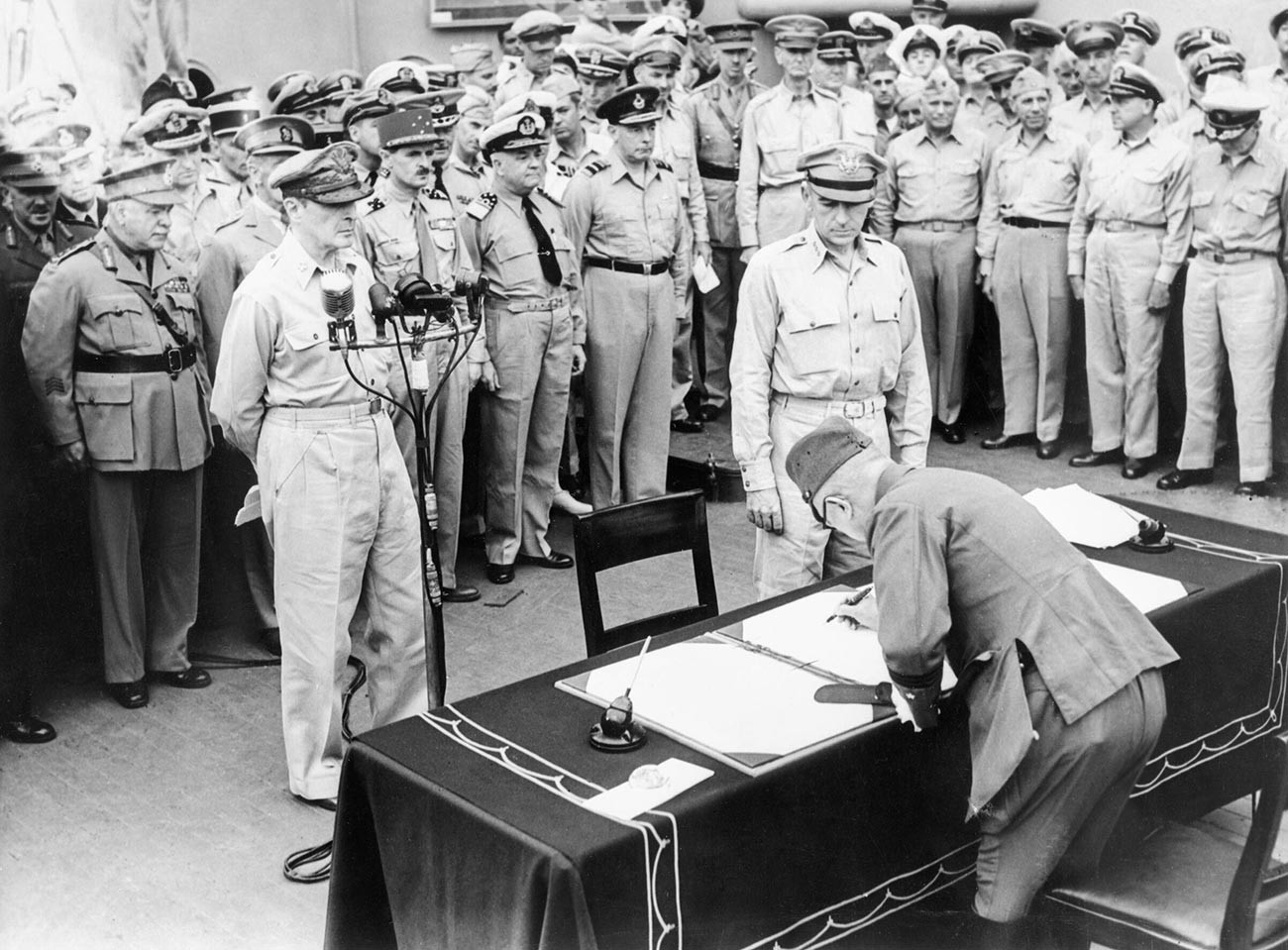
Japanese Surrender at Tokyo Bay, 2 September 1945.
Public DomainThe Americans, British and French, likewise, supported Zhukov’s idea. The parade was to be visited by Allied commanders: British Field Marshal Bernard Montgomery, The United States’ General Dwight Eisenhower and the French commander of the General Headquarters of National Defense, Jean de Lattre de Tassigny. However, after all the formalities were ironed out and the date scheduled for September 7, everyone suddenly refused to participate, citing a variety of reasons for not being able to send representatives.
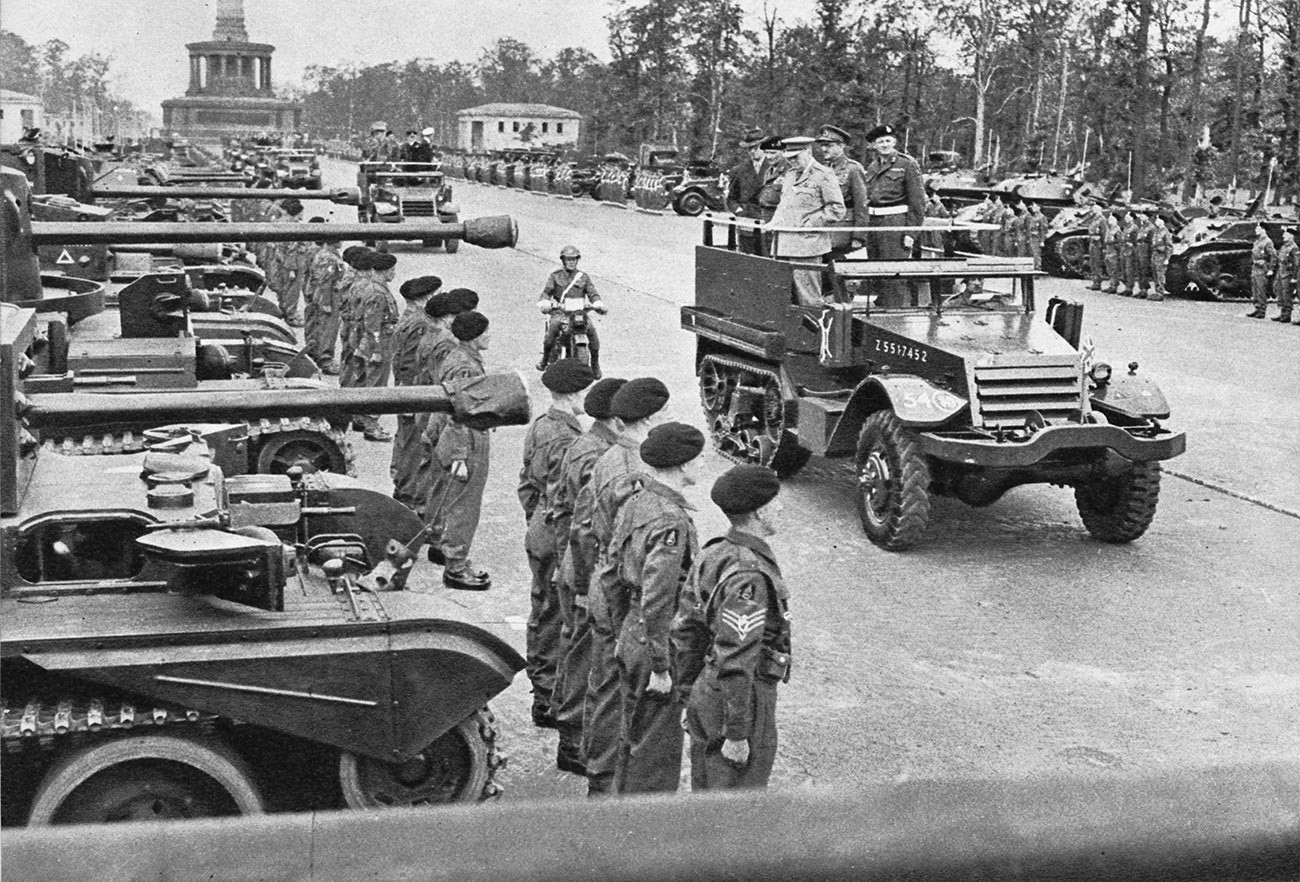
British Victory Parade in Berlin, July, 1945.
Getty ImagesA discouraged Zhukov asked Moscow whether anything should be organized at all under the circumstances and received a reply from Stalin: “They wish to reduce the meaning of the Great Victory in Berlin. Just you wait. They’ll have other tricks up their sleeve yet. Pay no attention to the Allies’ refusal and carry out the parade yourself, especially considering you have more right to it than they do.”
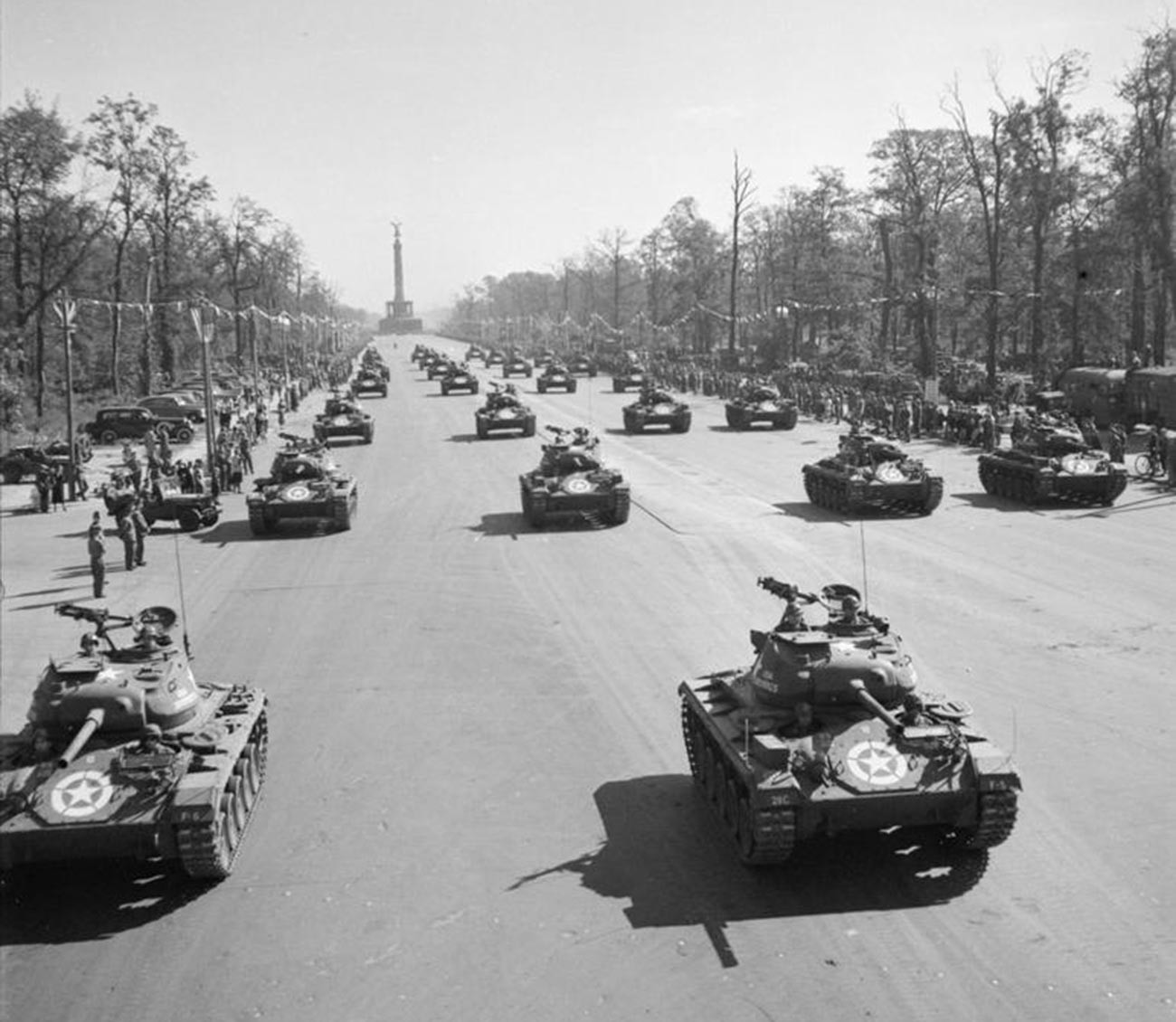
American M24 'Chaffee' Light Tanks during the parade, September 7.
Public DomainAs a result, the Victory Parade was attended by Major-General Brian Robertson, deputy chief of the British forces, U.S. General George Patton, the military governor of Bavaria (appointed during the Allied occupation of Germany, 1945-49) and General Marie-Pierre Koenig, the Commander in Chief of the French-occupied zone in Germany.
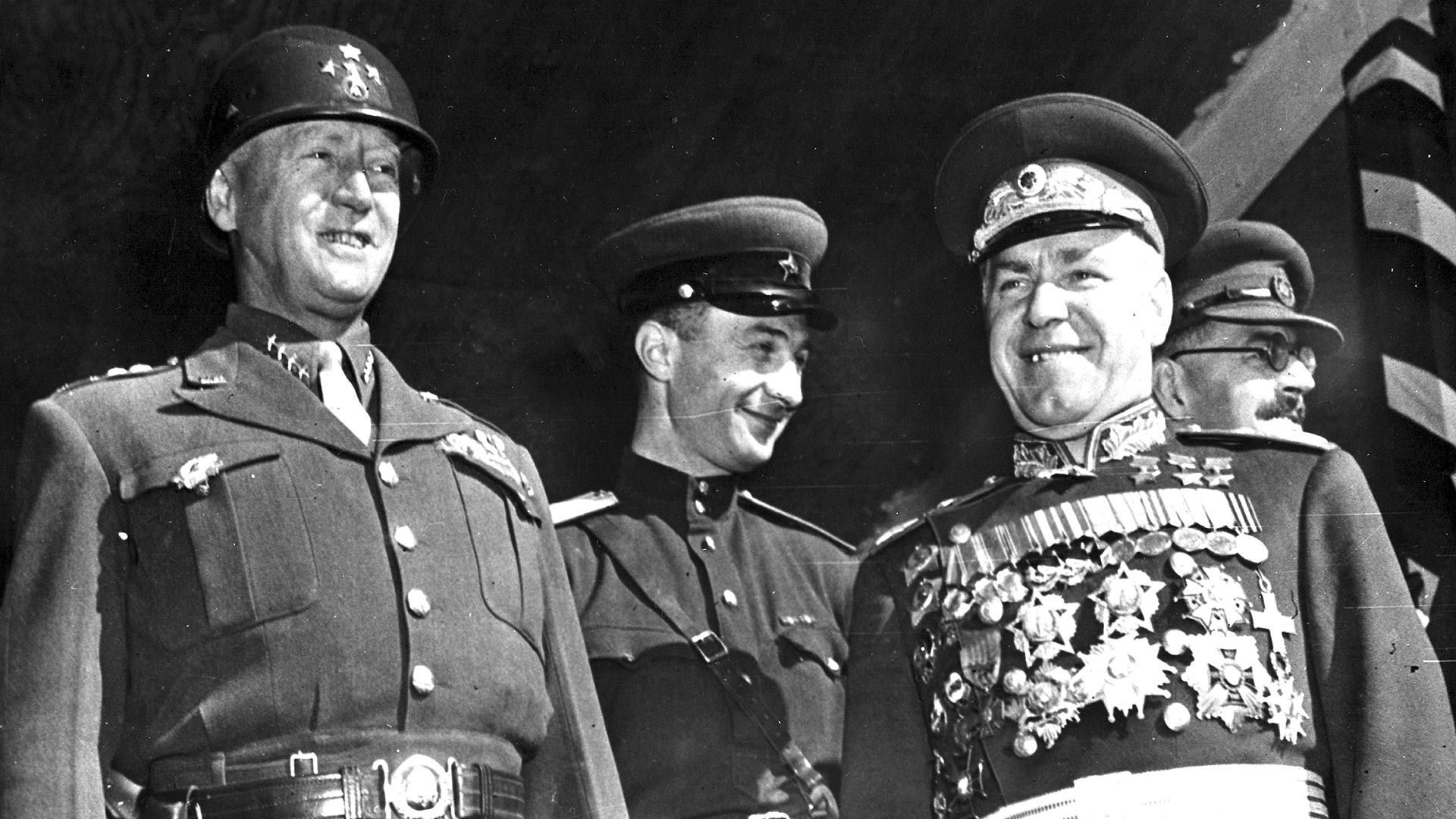
George S. Patton and Georgy Zhukov at the parade on September 7.
Getty ImagesThe Allied commanders (most likely under pressure from their governments) refrained from a joint march with the Red Army. However, it did host a number of prominent Western units. Among them was the 131st Infantry, the ‘Desert Rats’ of Bernard Montgomery, which had fought Erwin Rommel’s forces in North Africa. The 82nd US Airborne division also made it far, from Sicily to Normandy, then Ardennes. The French were represented by their Colonial Forces - specifically, the zouaves from Algeria - and alpine shooters who took part in the liberation of France. Each Ally put forth 1,000 troops for the parade.
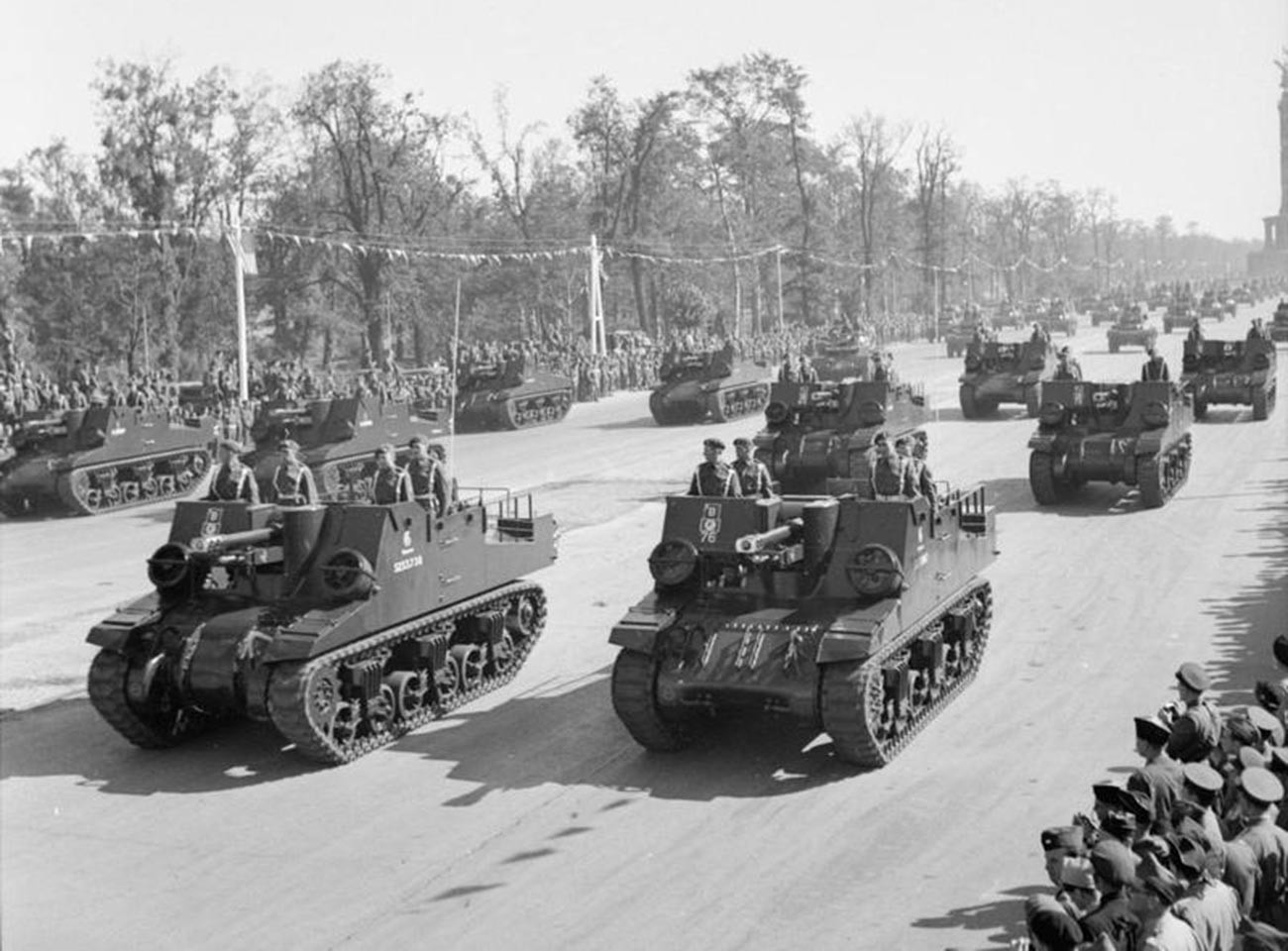
British Sexton self-propelled guns during the parade on September 7.
Public DomainThe Soviet side, for its part, formed a 2,000-person pivot column out of its 248th Rifle Division. Commanding it was the Hero of the Soviet Union, Lieutenant Colonel Georgy Lenev, the man in charge of storming Berlin.
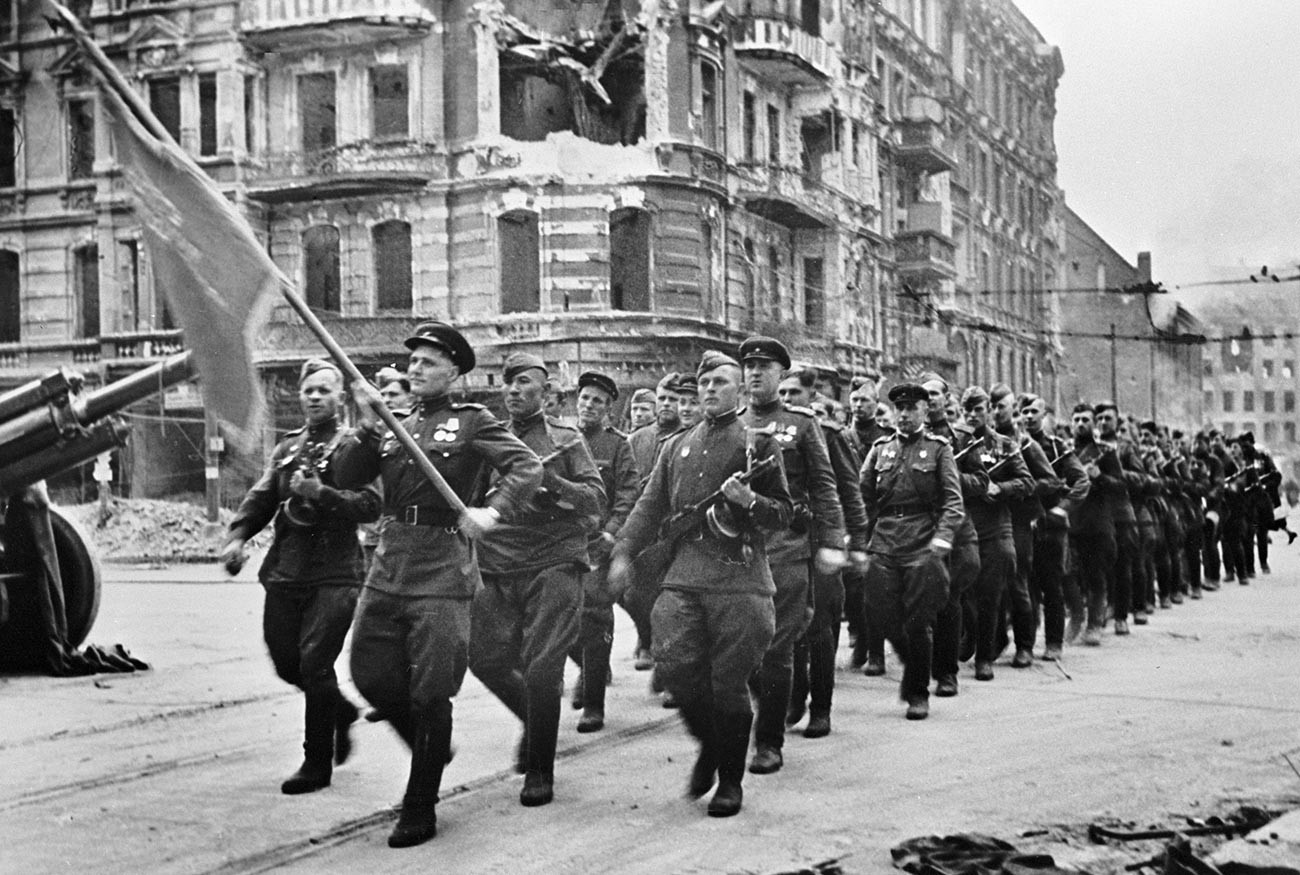
Soviet troops at the parade on September 7.
Timofey Melnik/SputnikA celebratory speech from Georgy Zhukov opened the parade. He declared that “from now [on], humanity has rid itself of the threat of a German attack from the West and Japanese thuggery in the East”. With 20,000 Berliners looking on, the soldiers marched past the Reichstag and the Brandenburg Gate to the music of an orchestra. The choice of route was no accident - those were the streets that saw the fiercest of the fighting over the city in May, 1945.
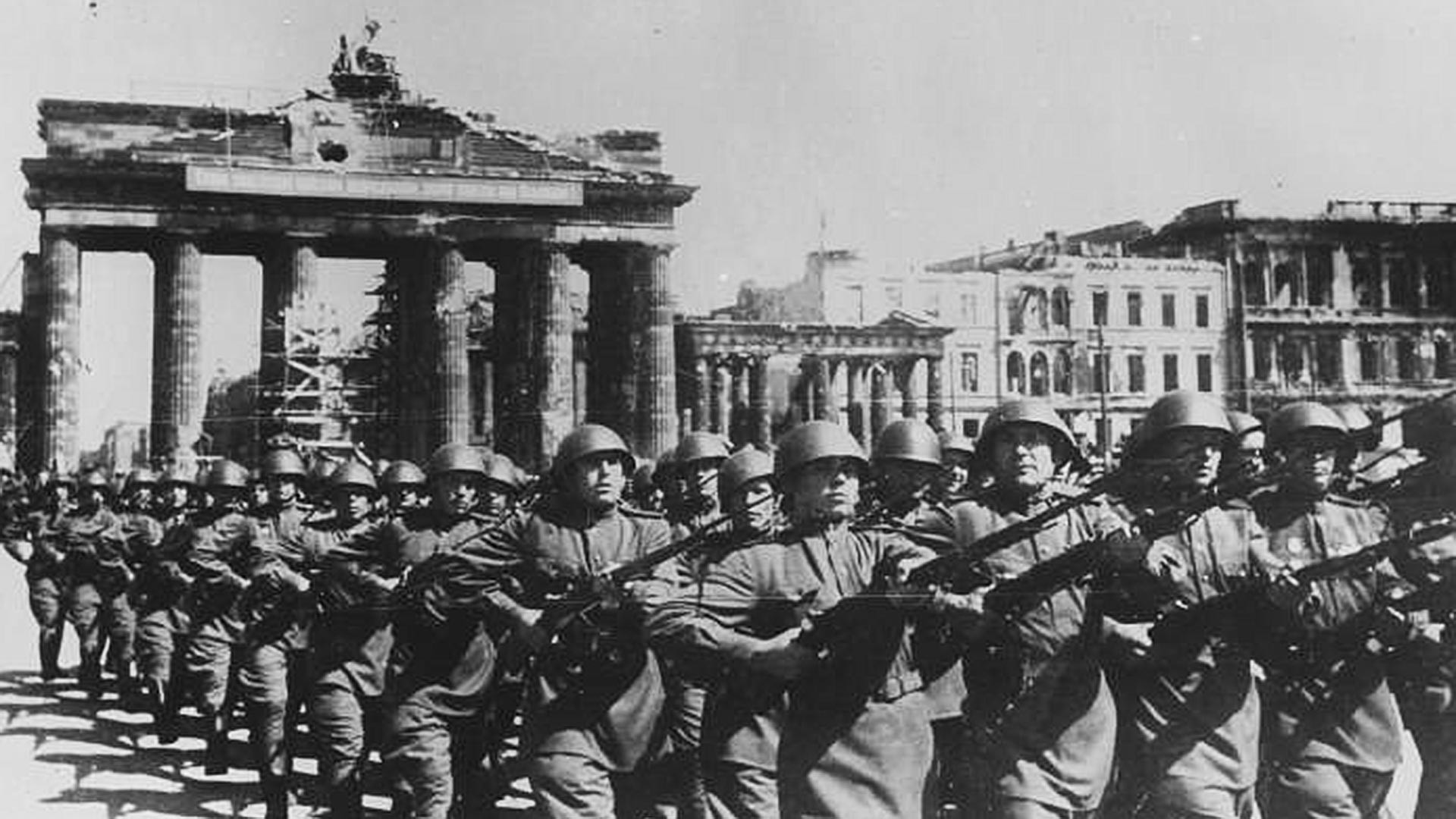
Soviet troops at the parade on September 7.
Viktor Temin/МАММ/МDF/russiainphoto.ruThe parade concluded with a show of armored vehicles. After the British, American and French mid-sized tanks and armored personnel carriers passed, 52 Soviet monsters - the heavy new IS-3 tanks - followed through. One urban legend says that one of General Patton’s entourage was startled by the sights of the IS tanks, with the U.S. general having to calm him by saying “Relax, they’re with us!”

Soviet IS-3 tanks driving down the Charlottenburger Chaussee in Berlin during the parade.
Public DomainSadly, the parade did not end up becoming a symbol of a solidified friendship between the USSR and its Western allies. On the contrary, it demonstrated the first signs of a cooling in their relationship. With the arrival of the Cold War, memories of this type were quickly consigned to history. And that’s how this historical event ended up being known as the ‘forgotten parade’.
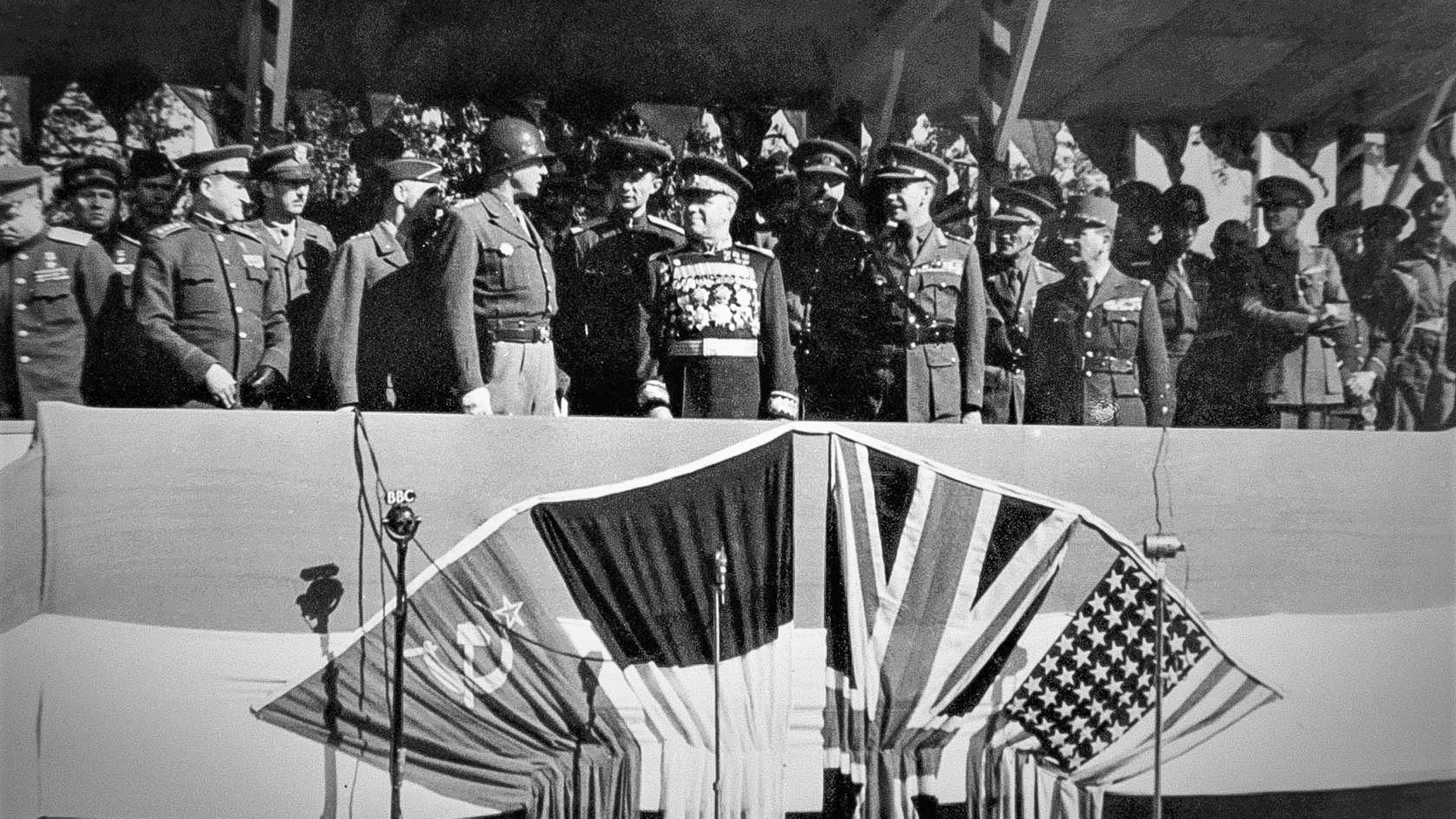
Allied commanders during the parade.
Ministry of Defense of the Russian FederationIf using any of Russia Beyond's content, partly or in full, always provide an active hyperlink to the original material.
Subscribe
to our newsletter!
Get the week's best stories straight to your inbox